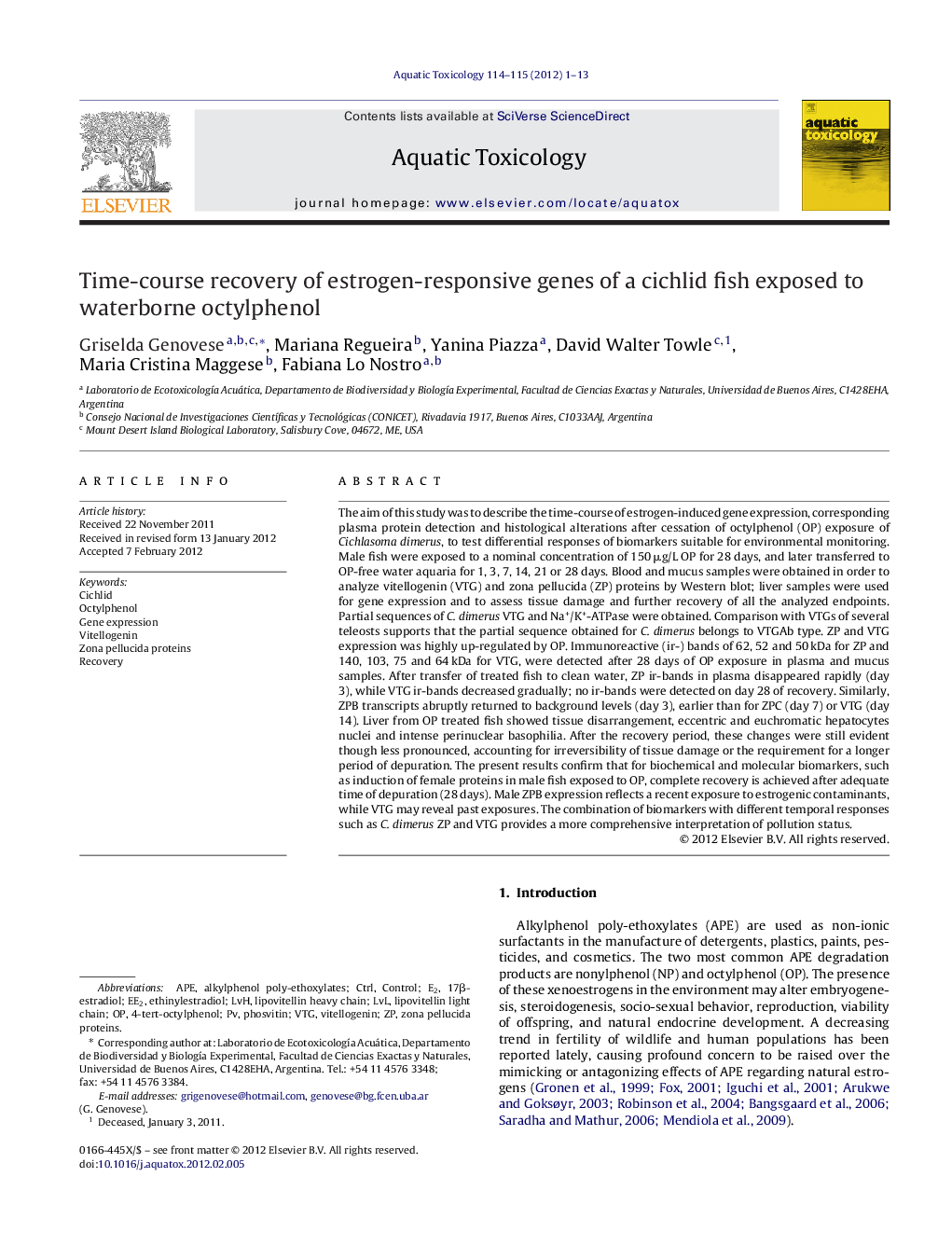| کد مقاله | کد نشریه | سال انتشار | مقاله انگلیسی | نسخه تمام متن |
|---|---|---|---|---|
| 4529666 | 1625976 | 2012 | 13 صفحه PDF | دانلود رایگان |

The aim of this study was to describe the time-course of estrogen-induced gene expression, corresponding plasma protein detection and histological alterations after cessation of octylphenol (OP) exposure of Cichlasoma dimerus, to test differential responses of biomarkers suitable for environmental monitoring. Male fish were exposed to a nominal concentration of 150 μg/L OP for 28 days, and later transferred to OP-free water aquaria for 1, 3, 7, 14, 21 or 28 days. Blood and mucus samples were obtained in order to analyze vitellogenin (VTG) and zona pellucida (ZP) proteins by Western blot; liver samples were used for gene expression and to assess tissue damage and further recovery of all the analyzed endpoints. Partial sequences of C. dimerus VTG and Na+/K+-ATPase were obtained. Comparison with VTGs of several teleosts supports that the partial sequence obtained for C. dimerus belongs to VTGAb type. ZP and VTG expression was highly up-regulated by OP. Immunoreactive (ir-) bands of 62, 52 and 50 kDa for ZP and 140, 103, 75 and 64 kDa for VTG, were detected after 28 days of OP exposure in plasma and mucus samples. After transfer of treated fish to clean water, ZP ir-bands in plasma disappeared rapidly (day 3), while VTG ir-bands decreased gradually; no ir-bands were detected on day 28 of recovery. Similarly, ZPB transcripts abruptly returned to background levels (day 3), earlier than for ZPC (day 7) or VTG (day 14). Liver from OP treated fish showed tissue disarrangement, eccentric and euchromatic hepatocytes nuclei and intense perinuclear basophilia. After the recovery period, these changes were still evident though less pronounced, accounting for irreversibility of tissue damage or the requirement for a longer period of depuration. The present results confirm that for biochemical and molecular biomarkers, such as induction of female proteins in male fish exposed to OP, complete recovery is achieved after adequate time of depuration (28 days). Male ZPB expression reflects a recent exposure to estrogenic contaminants, while VTG may reveal past exposures. The combination of biomarkers with different temporal responses such as C. dimerus ZP and VTG provides a more comprehensive interpretation of pollution status.
► ZP/VTG expression was induced by OP; values were restored after 28d of depuration.
► Liver histology damage was irreversible.
► ZP gene expression in C. dimerus males reflects recent exposure to xenoestrogens.
► VTG gene expression reveals past exposures to xenoestrogens.
Journal: Aquatic Toxicology - Volumes 114–115, 15 June 2012, Pages 1–13